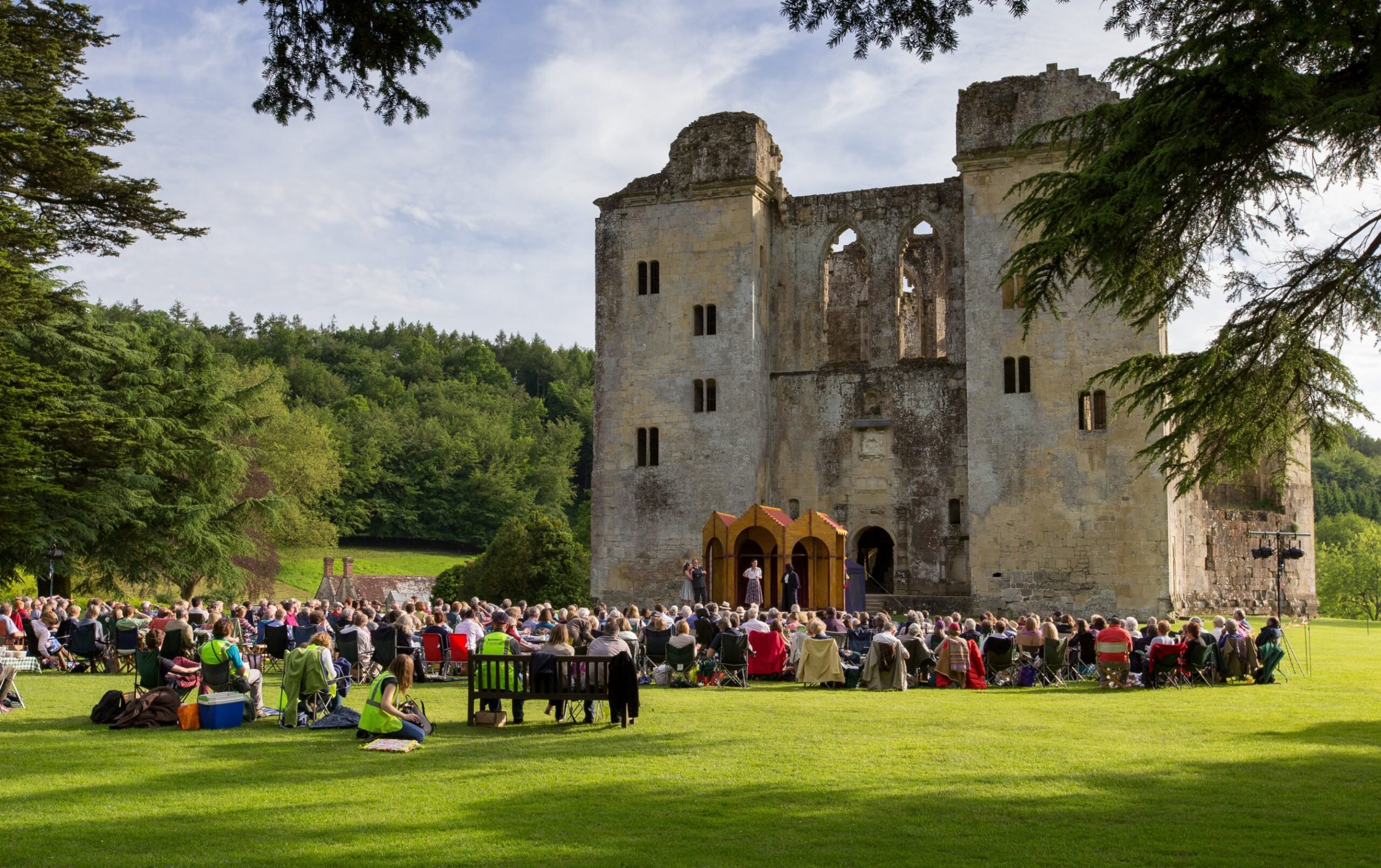
Photo: Adrian Harris
A broad funding base
Over £400k has to be raised every year to stage the Ageas Salisbury International Arts Festival. How do they do it? Toby Smith outlines his strategy.
The Salisbury Festival is 44 years old this year, multi-arts in scope, featuring around 150 events annually in venues across our medieval city and the surrounding Wiltshire landscape. We are particularly committed to international work – our focus this year is on the arts and culture of New Zealand – not forgetting new commissions and free work that animates the great outdoors.
There’s no instruction manual for getting the artistic programme off the ground each year. We balance the artforms, each with its own internal economy, as well as our commitment to international and local, new and existing, ticketed and free work each year. And, at pretty much the same time as all this comes into focus, we have to find upwards of £400k, representing 45% of our budget, to fund what we want to do.
The festival is a textbook example of an organisation with a broad funding base, operating in a relatively small, regionally based context
There’s nothing entirely surprising in the list of sources from which we secure this support: corporates, trusts and foundations, donors, friends, international funding streams, contracts and other income levered through the programme.
The festival is a textbook example of an organisation with a broad funding base, operating in a relatively small, regionally based context. Our income generation strategy is firmly rooted in maintaining and developing the depth and breadth of this base.
While this strategy demands a number of simultaneous campaigns, each is informed by a few underlying trends that underpin everything we do.
Consistent messaging is everything
We all face increased competition for funds and you can never take for granted that those people you are talking to know even the basic things that define you. We did some research last year that told us very few people were aware of our charitable status.
We’ve focused on this message over the past year, but it is clear we still have some way to go to embed this idea. Why fund us? Can everyone in the organisation answer this? Perhaps not, and so we continue to carefully hone the words we use, and use them consistently over and over again. We shouldn’t ever stop saying why we need support.
Bespoke partnerships
The days of generic ways of working are long gone. Virtually all of our corporate relationships are bespoke: one company wants profile, and so is helping us to ‘dress’ the city at festival time; for another it is about staff engagement and so our volunteering programme fits the bill; and a consortia of small businesses is working together to sponsor an event in a way that wouldn’t be affordable individually.
We’ve learnt to adapt and rejoice in the choice of ways we can work with each, allowing each partnership to grow organically.
Where are our missing rungs?
We’ve carried out a complete health check on our fundraising ladder, strengthening all its rungs and refurbishing it with a couple of new ones. For years we thought the recruitment of Friends was doomed to remain static, but this year with a renewed focus on being ‘the first to know’ we are on course to grow this income by 10%.
We are rolling out a regular giving programme to bridge the gap between Friends and donor support. And we’ve boosted online giving by targeting a previously generic ask, making a specific link to groups we are working with in our learning and participation work.
It never stops
In the past, we’ve seen the brochure sign-off as a full stop to fundraising for that year’s programme. Yet, not least because our income base is broadening, this milestone is now just a moment to regroup, retarget and line up behind a series of strategies to meet the remaining funding gap.
As an annual event, we are increasingly aware of the danger in only having a single (albeit rich) moment per year to talk with our supporters. We’ve evaluated our activity across the entire year and earmarked every opportunity that offers the potential to lever funds. While the festival runs for just 16 days, there are many more days in the year.
Fundraising is a shared responsibility
Our Development Manager always frames our fundraising as a team effort, with the board and entire staff recognising the role they play in contributing to income generation. All our trustees actively give in their own way. From our box office intern analysing ticket bookings to a trustee working alongside us to make a particular ask, everyone contributes something.
We’ve organised training for board and team together, and the members of our internal development group populate every level of the organisation. Creating a culture where all ideas are welcome is key, and measuring these ideas against our strategies ensures we remain targeted in what we do.
Support does not need to mean money
Our supporters are sometimes surprised at being asked to assist in securing support from another, or to advocate on our behalf. We realise this can be as valuable as an increased donation. Although, obviously, both would be nice.
Fleet of foot
Meeting our annual fundraising target is demanding. While the team here is light in number, and so we are quickly overstretched, it is this lightness that makes us fleet of foot to approach this target with a similar creativity and flexibility that characterises our artistic programme, and to draw together a consortium of support that helps our festival to fly.
Toby Smith is Festival Director of the Ageas Salisbury International Arts Festival.
www.salisburyfestival.co.uk
Join the Discussion
You must be logged in to post a comment.